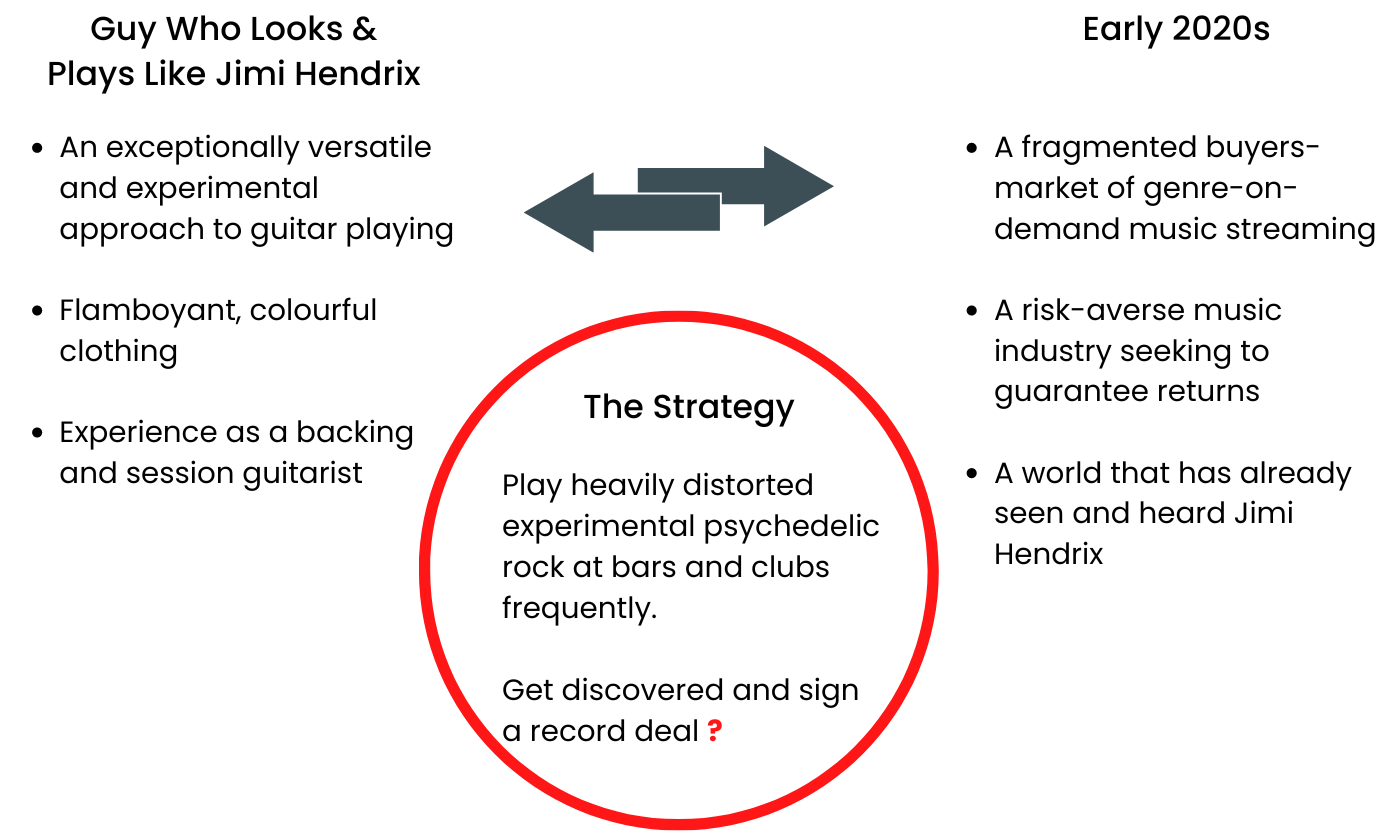The Framework of Everything
Success hinges on aligning unique talents with an external environment.
It’s the same in business, sports, and music.
Most of us spend a lot of time thinking about the internal domain — our company, our product, our skills, our history.
But we hardly ever spend enough time learning about the external domain — what people want, what else is out there, and the other outside factors that, more often than not, will dictate our success.
—
Consider this: why don’t we hear more guitar solos on the radio?
Rock guitar was one of the pillars of popular music for decades. The best players have only gotten better since the 80s. Search YouTube, and you can find people playing Hendrix better than Hendrix.
You can find children playing Eddie Van Halen solos note for note.
This was massive, cash-generating, culturally redefining talent when those songs were released. And there are people today who can write and play music just like it, yet they don’t experience anywhere close to the same success.
Why?
Simply put, things have changed. And more specifically, the external environment has changed.
Let’s look at some of Jimi Hendrix’s traits alongside related aspects of the late-1960s environment:
Now, let’s swap in our early 2020s environment:
Which of these characters on the left is likely to have greater success with their strategy, given their environment?
The guy who looks and plays like Jimi Hendrix can’t do the same things Hendrix did in the 60s and expect the same results. It just won’t work.
He needs to adapt. His music might need to change. If not, he can target a psychedelic rock niche, but he can’t expect to reach that fragmented audience just by playing bars and clubs. He needs to reach that audience online, and he needs to really think about how to describe (i.e., ‘position’) himself in a world that has already seen Jimi Hendrix.
The external environment has changed, and so too must the strategy.
To be successful, your actions must link your internal traits and capabilities with an external environment that can provide you with what you want.
—
There has to be alignment there, somewhere, between an internal and external domain to realize any sort of success.
This is true in sports, where teams wisely adapt their strategies to exploit their opponent’s weaknesses and mitigate their strengths.
And of course, it is also true in business and marketing. Business textbooks define ‘strategy’ as a link between the firm and its environment, and the whole point of marketing is to match internal resources and capabilities with external market needs.
This is the framework of everything. An internal domain, an external domain, and a link.
➝ That link represents the things you do, the words you use, and what you expect to achieve, given your actions. If either domain changes, the link is broken, and you must adapt.
This is a very broad, high-level paradigm. Each domain can be broken down into countless factors — the external domain might include the competitive environment, customer needs, the regulatory environment, the market’s state of sophistication…
Still, I’ve found it useful, so I’m sharing it with you.
We spend so much time thinking about the internal domain. We develop services and processes we want to deliver. We automate email flows we want people to read. But we hardly EVER spend enough time studying why a buyer might need what we do.
And if we can’t link our expertise to the realities of that external environment, we don’t have a service, and we don’t have a business. We have a hobby.
“Seek first to understand.”
-Stephen Covey’s most highly-effective habit
Thanks for reading.


